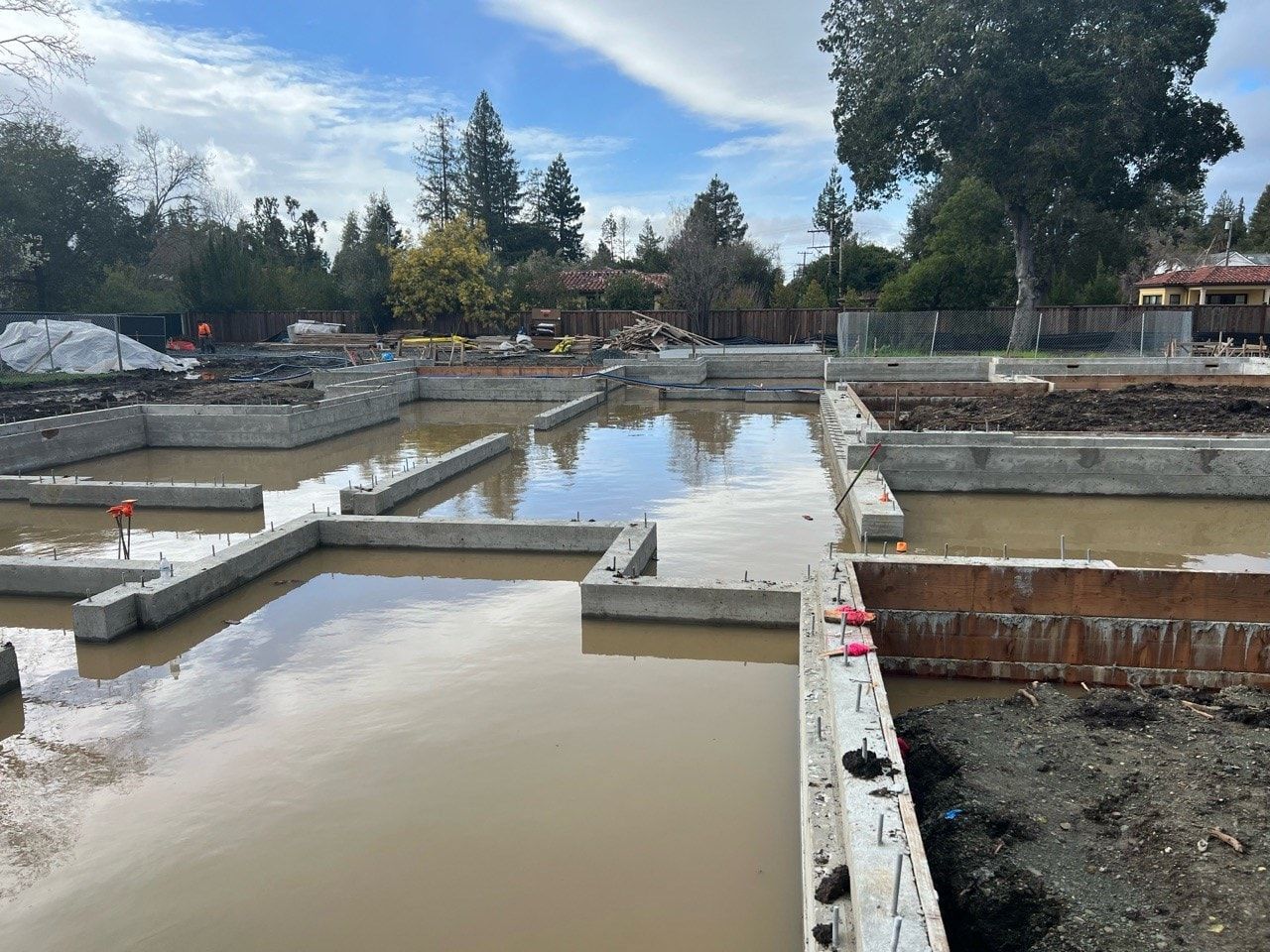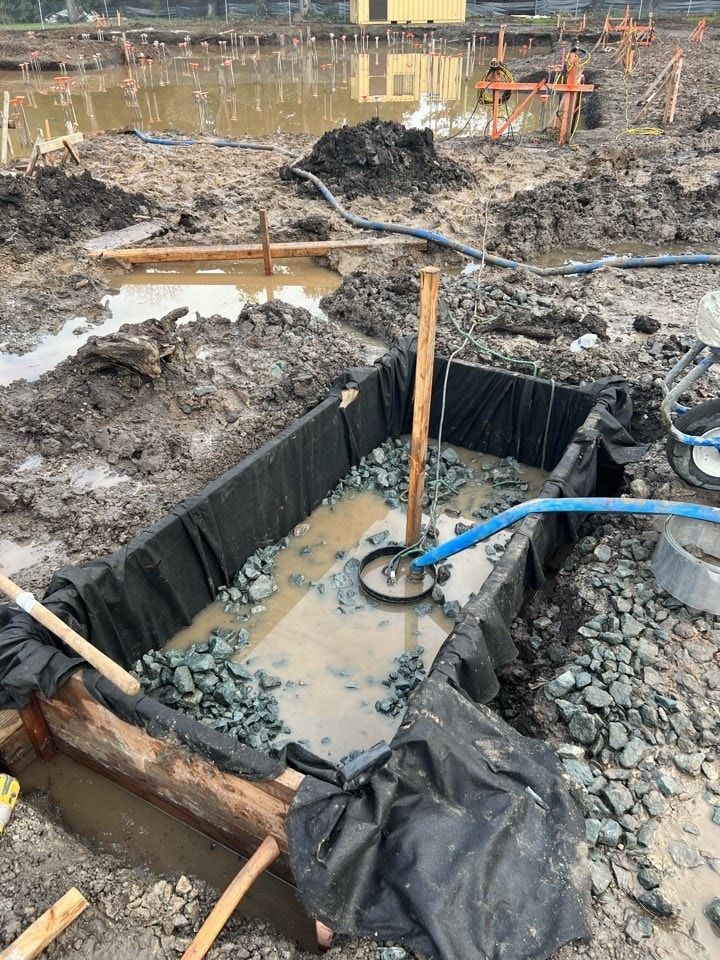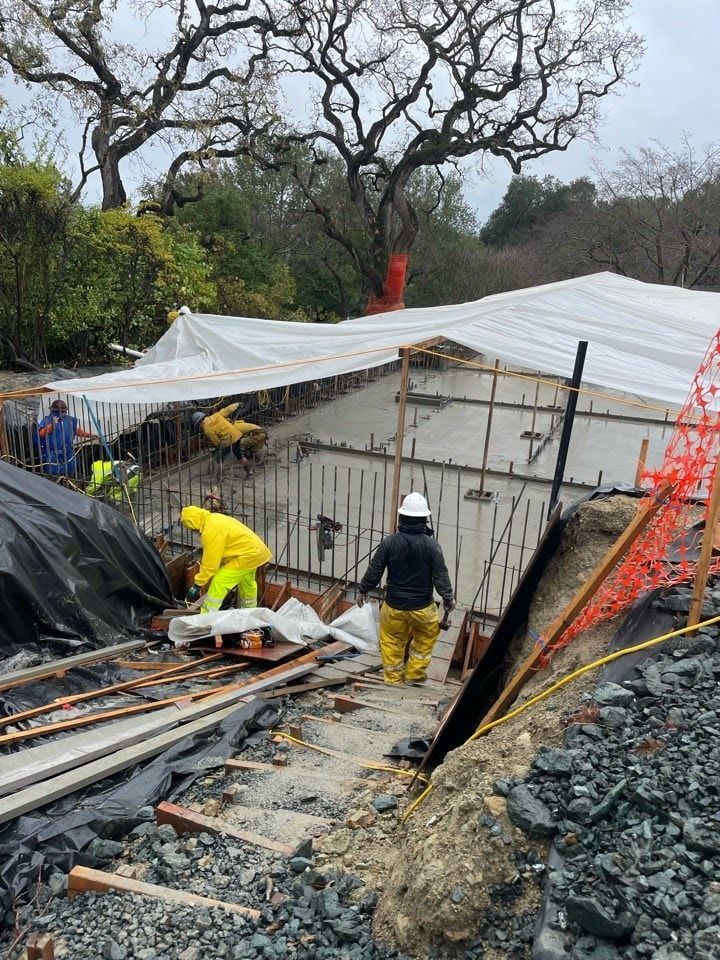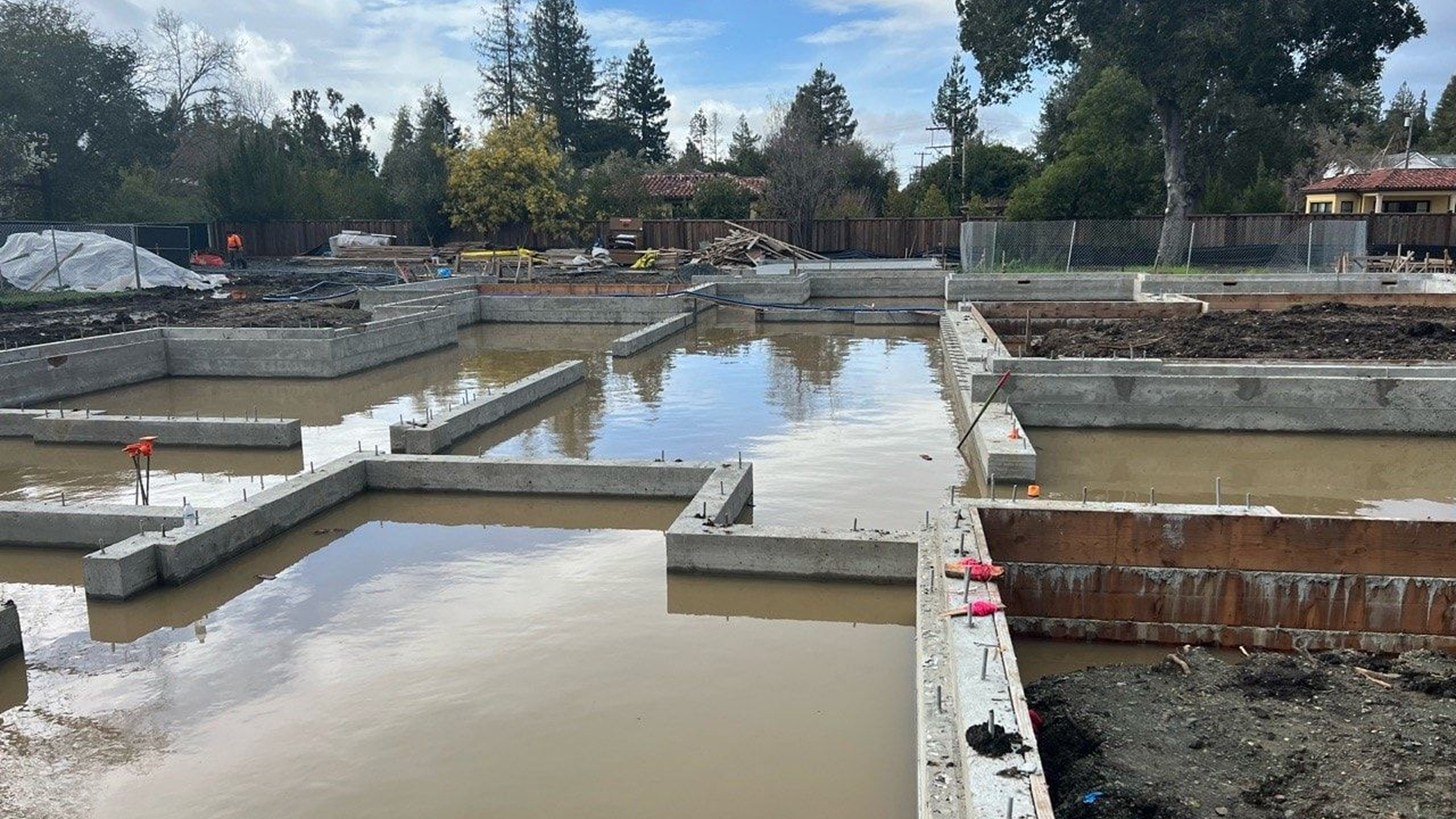Dewatering during rainy months is a crucial aspect of construction site management. When starting a job in the winter/rainy months, rain storms can wreak havoc on a jobsite, causing serious delays and potentially significant change orders. In this article, we will share a few tips on how to effectively dewater a construction site.

Plan Ahead
At the start of a job, the Project Manager should first review the erosion control details in the civil plans as well as study the site elevations to determine low spots of the property.
The site should then be surveyed for any potential stormwater issues. The following issues should be addressed in this survey:
- Are there storm gutters currently installed in the public street?
- Where does the water go?
- Where are the storm drains?
It's important to have proper construction entrances, permeable pathways, silt fencing, and waddles in place before it rains, though most cities will require these before construction can commence.
Be Aware of Your Surroundings
The jobsite is not isolated and its placement relative to neighboring properties should be taken into consideration. Is the jobsite at a low point on the street or cul-de-sac, is it on a hillside? Oftentimes, "run-on" water can accumulate on the property from neighboring properties, which can exacerbate the stormwater accumulation.
The other side of that is that soil runoff, without proper fencing, can impact downhill properties.
Consider the Soils at Your Site
Different soil types can have different impacts on stormwater runoff, so you'll want to assess the solid types on the property. Are they heavy clay, sandy, or a mix?
Clay soils have a high capacity to retain water, which can lead to increased runoff and flooding. Sandy soils, on the other hand, have a low capacity for water retention, resulting in faster stormwater runoff and potential erosion. Understanding the impacts of different soil types on stormwater runoff is important for effective stormwater management and reducing the risk of flooding and erosion.
Prepare, Prepare, Prepare!
Here are a few measures that can be implemented before the rain comes to help reduce the risks that excessive rainwater presents to job sites:
Sedimentation Management
Strategically place sedimentation pits and trenches, berms, swales, and sandbags. These tools effectively mitigate water accumulation in important areas.
Sedimentation pits can be built by digging holes or trenches and lining them with filter fabric and filling the holes with ¾" drain rock. These pits are often where you install water pumps that can sit inside of a plastic garbage can or 5-gallon bucket with many ½" holes drilled in the sides to reduce sediment buildup around the pump.

Much like a sedimentation pit, a sedimentation trench can have a perforated pipe set at the bottom to run water to a more desirable location.
Protective Measures
Have ample plastic or tarps on hand to cover soil piles and important areas of construction.
Temporary roof structures can also be made to protect important work areas from rain and can be effective in keeping work areas dry. If you have questions, have a conversation with the civil engineer.
Pumping Plan
Develop a pumping plan and make sure to have pumps ready and on hand. Don't wait until the last minute! Everyone starts hunting for water pumps when it starts to rain, and it gets more difficult to find them at that point. For larger amounts of water, pumps with a 2" or larger hose are more effective than pumps that use a ¾" garden hose.

Proper Disposal of Groundwater Discharge and Captured Runoff
Groundwater discharge and captured runoff must be properly managed and disposed of. When possible, send dewatering discharge to a landscaped area on the property.
If you need to discharge to a sanitary sewer you need to call the local waste water treatment company or local municipality beforehand. Discharging water to a storm gutter or drain without proper approval can potentially result in significant fines!
If the site is known to be in a contaminated area you may need to have your water tested before disposal. The soil engineer on the job should be able to provide this information.
Dewatering a construction site is a critical process that ensures safety and efficiency on a jobsite. By following these tips, including preemptively surveying the jobsite, selecting the right dewatering method, and proper disposal of water, you can successfully manage water and avoid costly delays. It is important to prioritize safety and compliance with local regulations to ensure the success of the project and protect the environment. With careful planning and execution, dewatering can be a smooth and effective process.






